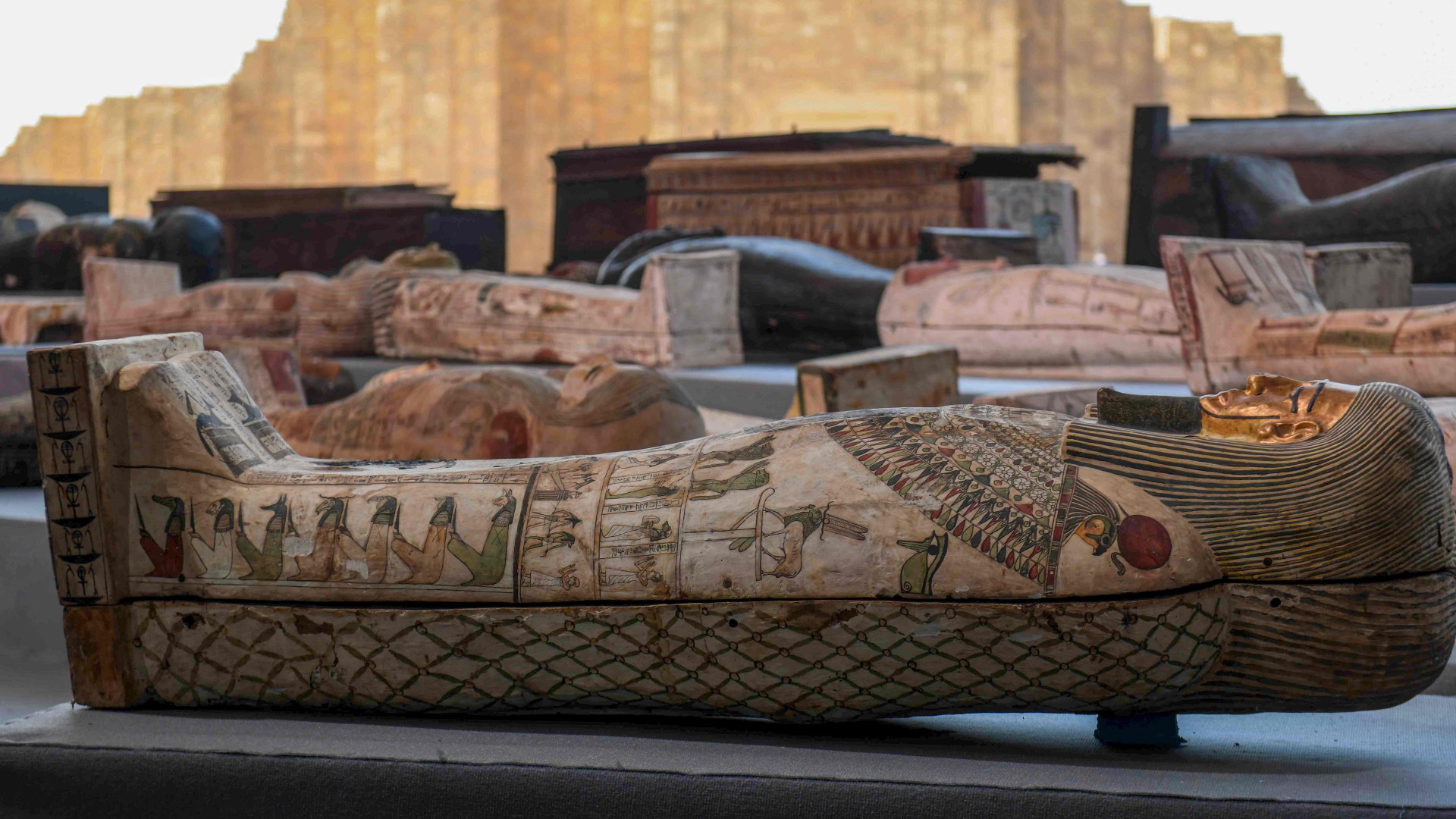
[ad_1]
Saqqara once served as a burial site in the ancient Egyptian capital of Memphis. Again and again, researchers find there well-preserved evidence from the past. As now: 100 wooden coffins, 40 statues and at least one mummy.
In the Egyptian necropolis of Saqqara, archaeologists have again discovered dozens of excellently preserved sarcophagi. In total, there are more than 100 coffins that have been closed, Egypt’s minister of antiquities, Khalid al-Anani said. The find also included about 40 statues.
According to official information, the more than 2,000-year-old wooden coffins were found in three tombs twelve meters deep south of Cairo. For researchers, it is the largest discovery of its kind this year. One of the coffins was reportedly opened. Inside was a mummy wrapped in a shroud and adorned with colorful hieroglyphic images, the researchers said. According to them, the sarcophagi belonged to high-ranking officials who lived in the late period (700-300 BC) and the Ptolemaic period (323-30 BC) of ancient Egypt.
It is not the first discovery this year
Saqqara is located on the Nile south of Cairo and in the time of the pharaohs served as a cemetery for the capital of the Empire of Memphis. The tourist attraction is a UNESCO World Heritage Site. Archaeologists only found about 60 sarcophagi there in October, which were in excellent condition. The pyramids of Saqqara are considered a “great masterpiece of architectural design”, as Unesco writes. There is also the famous 5,000-year-old step pyramid of Pharaoh Djoser.
According to the minister of antiquities, archaeologists can hope for further discoveries at the site. “Saqqara has only released about one percent of what is hidden there,” Al-Anani said. “If we keep working, we can expect to find more graves of humans and animals.” The excavations are far from finished.
The coffins will be exhibited in the Great Egyptian Museum, currently under construction on the pyramids of Giza. It will open to visitors next year and, according to the operator, will house the largest archaeological collection in the world.
.
[ad_2]
Source link